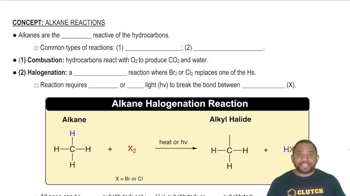Here are the essential concepts you must grasp in order to answer the question correctly.
Balancing Chemical Equations
Balancing chemical equations is essential to ensure that the number of atoms of each element is conserved in a reaction. This involves adjusting the coefficients of the reactants and products so that the total mass remains constant, adhering to the law of conservation of mass. For example, in the reaction of hydrogen chloride and oxygen, one must determine the correct stoichiometric coefficients to balance the equation accurately.
Recommended video:
Balancing Chemical Equations
Chemical Reaction Types
Understanding the types of chemical reactions is crucial for predicting the products and writing balanced equations. The reaction between hydrogen chloride and oxygen is an example of a redox reaction, where oxidation and reduction occur simultaneously. Recognizing the reactants' roles helps in identifying the products, which in this case include chlorine and water.
Recommended video:
Common Types of Alkane Reactions
Stoichiometry
Stoichiometry involves the calculation of reactants and products in chemical reactions based on their molar ratios. It allows chemists to predict how much of each substance is needed or produced in a reaction. In the context of the given question, stoichiometry will help determine the correct coefficients for hydrogen chloride, oxygen, chlorine, and water in the balanced equation.
Recommended video:
 Verified step by step guidance
Verified step by step guidance

